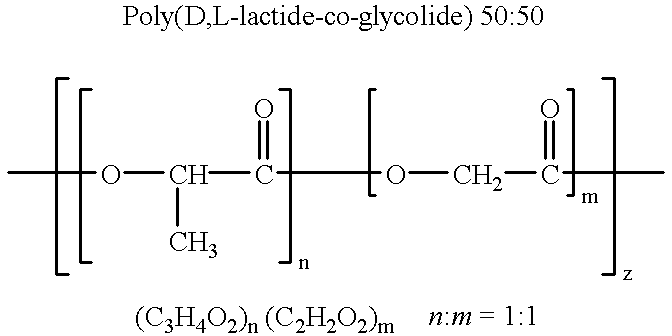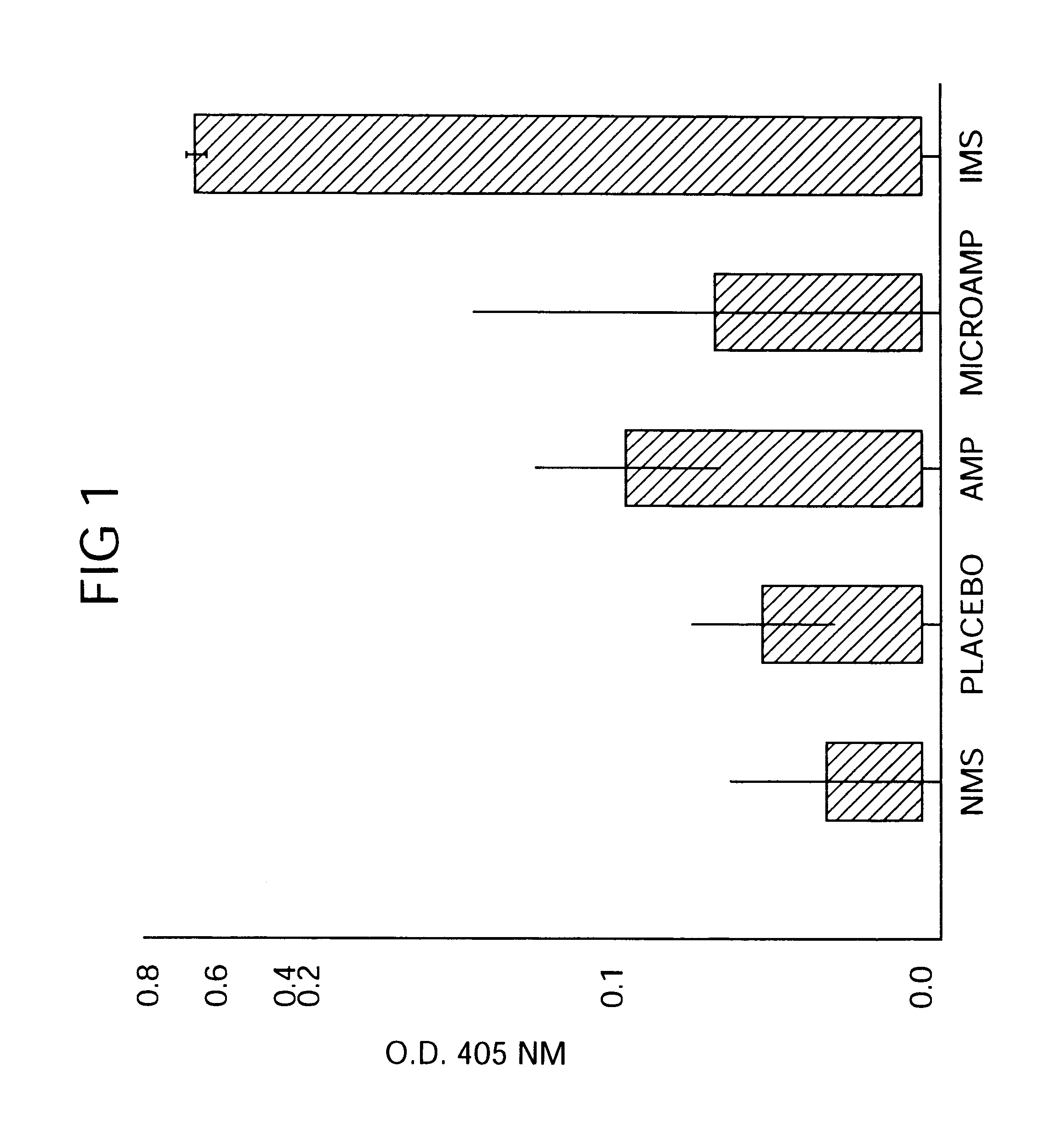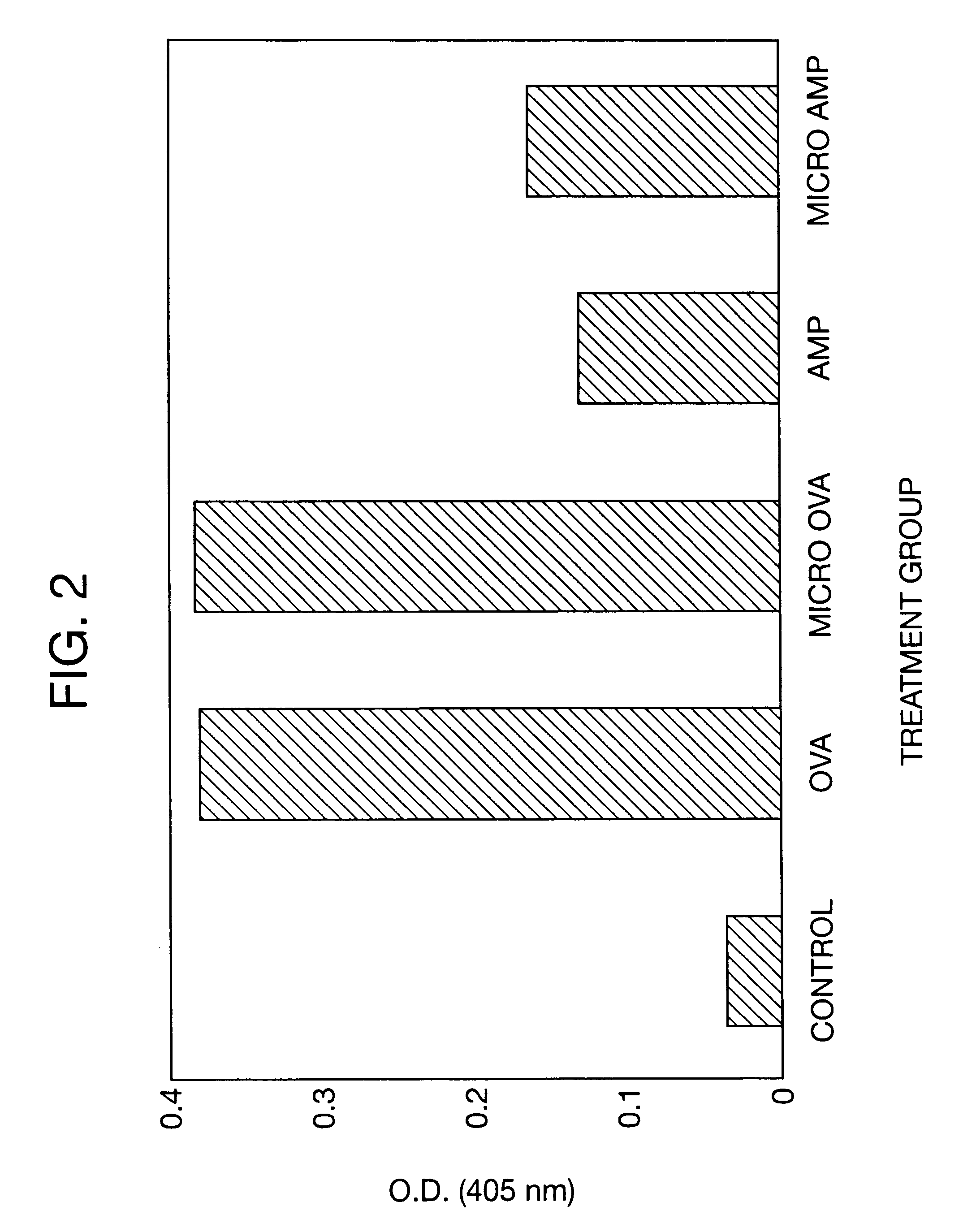Therapeutic treatment and prevention of infections with a bioactive materials encapsulated within a biodegradable-biocompatible polymeric matrix
a bioactive material and polymer technology, applied in the field of therapeutic treatment and prevention of infections with bioactive materials encapsulated within a biodegradablebiocompatible polymeric matrix, can solve the problems of high infection rate, difficult treatment, foreign body contaminants, etc., and achieve the effect of enhancing the antibiotic efficacy for both prophylaxis and treatmen
- Summary
- Abstract
- Description
- Claims
- Application Information
AI Technical Summary
Benefits of technology
Problems solved by technology
Method used
Image
Examples
example 1
Osteomyelitis Model. The technique used to produce osteomyelitis was a modification of the procedure described previously by Norden. Briefly, New Zealand white rabbits (2.0-2.5 kg, each) were anesthetized with ketamine hydrochloride and xylazine and access to the medullary canal was gained by inserting an 18-guage Osgood needle (Becton Dickinson Corp., Rutherford, N.J.) into the right proximal tibial metaphysis. Through this needle was injected 0.1 ml of 5 Pharmaceuticals, Tenafly, N.J.) followed by injection of approximately 5.times.10.sup.6 CFU of S. aureus ATCC 6538P. The hole in the bone was sealed with bone wax and each animal received a single subcutaneous injection of 3-ml TORBUTROL.TM. (A. J. Buck, Hunt Valley, Md.) for postoperative pain control. Antibiotic therapy was then initiated either immediately or was delayed for 7-days as described in detail below.
example 2
Immediate Antibiotic Therapy. The initial experiment was designed to evaluate the efficacy of local therapy with microencapsulated ampicillin for the prevention of experimental osteomyelitis. A total of 31 rabbits were infected in the right proximal tibia with sodium morrhuate and S. aureus and treatment was initiated immediately as follows:
Group A (n=6) received three daily subcutaneous injections (75 mg / kg / day) of aqueous sodium ampicillin (Polycillin-N.TM., Bristol Laboratories, Syracuse, N.Y.) at 8-hour intervals for 14 consecutive days;]
Group B (n=7) received a single intramedullary injection of 100 mg of microencapsulated ampicillin containing an equivalent of 30.7 mg of ampicillin anhydrate. The microcapsules / spheres were suspended in 0.2-ml of 2 injection vehicle) and were then injected into the medullary canal through the same needle that was used to inject the sclerosing agent and bacteria;
Group C (n=4) received a single intramedullary injection of 0.12 ml (30.7 mg) of aqu...
example 3
Delayed Antibiotic Therapy Without Debridement. In the second experiment, a total of 30 rabbits were injected in the right proximal tibia with sodium morrhuate and S. aureus and the infection was allowed to become established for 7-days. On Day 7, the animals were reanesthetized and an incision was made over the patellar tendon to expose the tibial tuberosity. A 5-mm drill hole was made in the tibial tuberosity and a trocar, measuring approximately 15 centimeters in length, was inserted into the medullary canal to obtain a marrow specimen for culture. The animals were then randomly assigned to the following treatment groups:
Group A (n=8) received three daily subcutaneous injections of aqueous sodium ampicillin (75 mg / kg / day) at 8-hour intervals for 14-days;
Group B (n=8) received an intramedullary application of 150 mg of microencapsulated ampicillin containing an equivalent of 45 mg of ampicillin anhydrate. The microcapsules were initially suspended in 0.2 ml of the injection vehicl...
PUM
| Property | Measurement | Unit |
|---|---|---|
| molecular weight | aaaaa | aaaaa |
| molecular weight | aaaaa | aaaaa |
| molecular weight | aaaaa | aaaaa |
Abstract
Description
Claims
Application Information
 Login to View More
Login to View More - R&D
- Intellectual Property
- Life Sciences
- Materials
- Tech Scout
- Unparalleled Data Quality
- Higher Quality Content
- 60% Fewer Hallucinations
Browse by: Latest US Patents, China's latest patents, Technical Efficacy Thesaurus, Application Domain, Technology Topic, Popular Technical Reports.
© 2025 PatSnap. All rights reserved.Legal|Privacy policy|Modern Slavery Act Transparency Statement|Sitemap|About US| Contact US: help@patsnap.com



